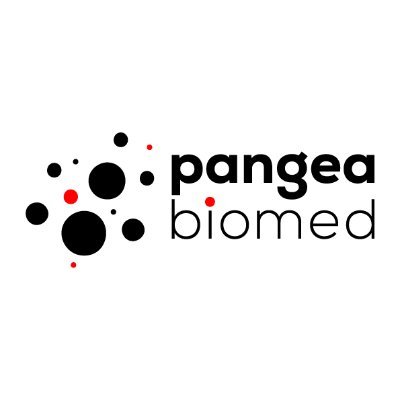Pangea Biomed: New Collaborative Study Uses Pangea’s Platform to Create World’s First Sequencing-Free, Transcriptomics-Based Drug Response Predicting System
 Published in bioRxiv, the study leverages Pangea Biomed’s ENLIGHT platform to develop a novel approach to precision cancer care that combines AI techniques and digital pathology, bypassing the need for expensive and time-consuming DNA and RNA sequencing
Published in bioRxiv, the study leverages Pangea Biomed’s ENLIGHT platform to develop a novel approach to precision cancer care that combines AI techniques and digital pathology, bypassing the need for expensive and time-consuming DNA and RNA sequencing
Tel Aviv, Israel – WEBWIRE – Monday, June 13, 2022
Pangea Biomed, the company that created ENLIGHT – the world’s most advanced multi-cancer response predictor, today announced the publication of research demonstrating the first-ever combined digital pathology and expression-based approach for predicting patient response to cancer treatment. This novel research, dubbed ENLIGHT-DeepPT, applies Pangea’s original ENLIGHT platform to the gene expressions predicted by the new DeepPT framework, demonstrating for the first time a genetic interactions (GI) based approach for predicting patient response to treatment. Published in bioRxiv, the study was led by Eytan Ruppin, chief of the Cancer Data Science Lab with Kenneth Aldape, Chief of Pathology at the National Cancer Institute’s Center for Cancer Research (NCI/CCR), part of the National Institutes of Health, in collaboration with Pangea Biomed, as well as Danh Tai Hoang and Eric Stone at the Australian National University.
Since the creation of the microscope, histopathology has continued to advance the field of oncology. More recently, the widespread use and availability of digital histopathology have allowed for the expansion of AI, machine learning, and big data in cancer care and diagnosis. ENLIGHT-DeepPT takes digital histopathology one step further. Using AI deep learning and unsupervised learning techniques, ENLIGHT-DeepPT demonstrates the potential to predict patient response to precision oncology treatments without the need for sequencing-based comprehensive molecular profiling.
“Beyond the novelty of this approach, this direction has the potential to make precision oncology accessible to wide patient populations who would otherwise never have the opportunity to benefit from it,” said Pangea CEO Tuvik Beker. “This technique – once corroborated further – could augment the use of precision cancer care in developing countries and in situations where next-generation sequencing is not an option due to the lack of sufficient tissue, time or resources.”
This study shows that ENLIGHT-DeepPT successfully predicts response to Trastuzumab treatment in breast cancer patients directly from the hematoxylin and eosin (H&E) tumor slides. Uniquely, ENLIGHT-DeepPT does not require response data to train on, thanks to its unsupervised learning approach. The unsupervised approach makes the platform scalable and effective when large training cohorts aren’t available, making its predictive signatures more likely to retain their predictive power on additional, unseen datasets.
ENLIGHT-DeepPT is based on two essential elements:
- DeepPT (Deep Pathology for Treatment): a new deep learning framework that predicts gene expression values from H&E-stained tumor slides. The framework was trained on images and corresponding transcriptomic data of breast, kidney, lung, and brain tumor samples from The Cancer Genome Atlas (TCGA). It shows an unprecedented ability to predict transcriptomics from these images in nested cross-validation as well as, notably, in evaluation of two independent datasets of breast and brain tumor samples.
- ENLIGHT: Pangea’s proprietary multi-cancer, multi-therapy response predictor. The platform uses whole-transcriptome gene expression values (and in the current application values predicted by DeepPT) coupled with unsupervised AI techniques to visualize relationships between networks of human genes and existing cancer treatments. It then uses cancer vulnerability GI networks to predict response to treatment for a wide variety of targeted and immunotherapies.
The ENLIGHT-DeepPT approach successfully predicted true responders in a recently published multi-omic breast cancer clinical trial directly from the H&E images, obtaining a highly significant and clinically meaningful hazard ratio of about six. The approach was tested on one independent validation set, as datasets combining targeted treatment, pre-treatment slides, and outcome monitoring are still scarcely available. The study team is currently focusing on acquiring and analyzing additional cohorts to further test these promising results and learn more about their potential scope and implications.
“This new approach could herald an age of more affordable, versatile, and timely precision oncology profiling,” said Danh-Tai Hoang. “It’s a first shot in this promising direction, but once properly validated, could bring precision oncology to developing countries and offer affordable screening alternatives before patients are referred to costly sequencing-based tests.”
The study’s authors include Danh-Tai Hoang, Gal Dinstag, Leandro C. Hermida, Doreen S. Ben-Zvi, Efrat Elis, Katherine Caley, Sanju Sinha, Neelam Sinha, Kenneth Aldape, Ranit Aharonov, Eric Stone, and Eytan Ruppin.
This announcement comes only a few months after Pangea’s launch from stealth with $7 million in seed funding from NFX and its recent appointment of Dr. Ezra Cohen as chairman of the company’s scientific advisory board.
The manuscript preprint can be found here. To learn more about Pangea and how the company is revolutionizing precision cancer care, please visit https://pangeabiomed.com.
About Pangea Biomed
Founded in 2018, Pangea Biomed developed ENLIGHT – the world’s most advanced multi-cancer, multi-therapy response predictor. By combining machine learning and deep RNA analysis, the company is mapping tumor molecular signatures to dynamically and adaptively personalize cancer care for a healthier world. Pangea aims to bring effective precision oncology to cancer patients, improve oncology drug development and empower oncologists to treat patients with success. Pangea is backed by NFX, and its technology has been published in leading journals, including Cell, Science Advances, Cancer Cell, and Nature Communications.
SOURCE: Webwire
































